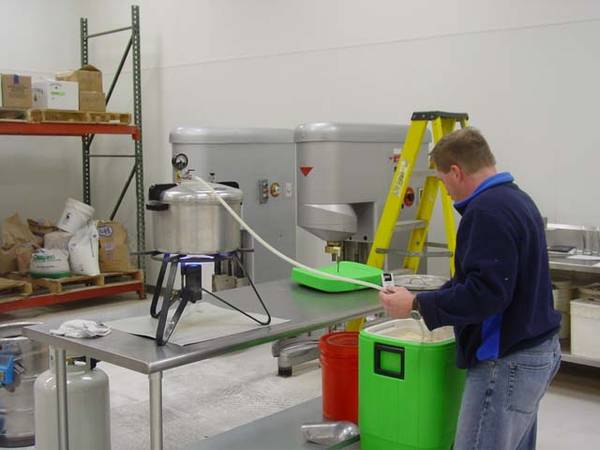Some of you may remember that I built a mash steam generator from a corny keg. I outlined it here. I haven't fired it yet.
https://www.homebrewtalk.com/showthread.php?t=18008
Ummm... it turns out that I already had a 22 Quart steam generator, otherwise known as a pressure cooker, in our house in storage !
You can see pictures of it here.
http://picasaweb.google.com/beermeister1/MashSteamBoiler2
We bought it about 8 years ago to do some pressure canning. I don't remember where we got it from.
It holds 22 quarts of water. It has 5,10 and 15 PSI pressure settings. It should work excellent. I'll probably incorporate it into my brew stand when I build it.
I'll drill and tap the lid 1/8"NPT or 1/16" NPT and put a valve on it with a line that leads to the mash vessel. I'll heat it with a high powered stove burner, not sure if it will be gas or electric. I'll put a temp sensor on the outside so that my controller can turn the heat on and off as necessary.
I might just put it on the boil pot burner. But the problem with doing that is I can't do two batches at once, one boiling and another mashing. I'm designing my new brewstand for maximum throughput brewing sessions. 6, 12 or 15 gallon batches and doing 2 batches back to back. I guess I need to weigh how important it is to have that capability.
https://www.homebrewtalk.com/showthread.php?t=18008
Ummm... it turns out that I already had a 22 Quart steam generator, otherwise known as a pressure cooker, in our house in storage !
You can see pictures of it here.
http://picasaweb.google.com/beermeister1/MashSteamBoiler2
We bought it about 8 years ago to do some pressure canning. I don't remember where we got it from.
It holds 22 quarts of water. It has 5,10 and 15 PSI pressure settings. It should work excellent. I'll probably incorporate it into my brew stand when I build it.
I'll drill and tap the lid 1/8"NPT or 1/16" NPT and put a valve on it with a line that leads to the mash vessel. I'll heat it with a high powered stove burner, not sure if it will be gas or electric. I'll put a temp sensor on the outside so that my controller can turn the heat on and off as necessary.
I might just put it on the boil pot burner. But the problem with doing that is I can't do two batches at once, one boiling and another mashing. I'm designing my new brewstand for maximum throughput brewing sessions. 6, 12 or 15 gallon batches and doing 2 batches back to back. I guess I need to weigh how important it is to have that capability.








